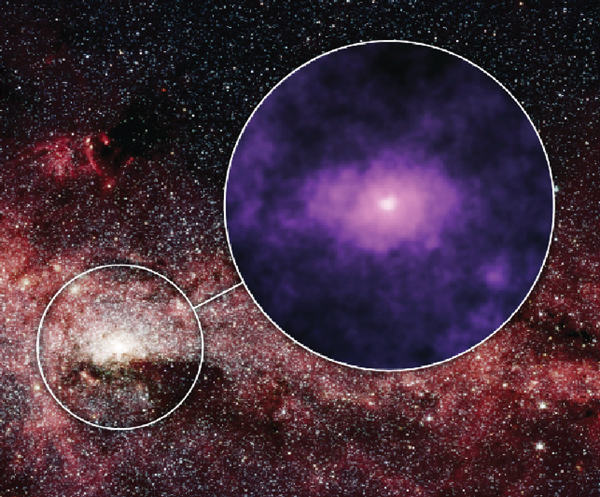Kerstin Perez was using NuSTAR data to study the glowing material around a neutron star lying in the galactic center. But she couldn’t get rid of a pervasive signal in the central 13 light-years by 26 light-years. Once she convinced herself and her colleagues that this signal truly exists, they went to work to figure out what it could be.
NuSTAR doesn’t just take pictures; it also spreads the light out in a spectrum, collecting information about the intensity of light at each individual color to make it easier to analyze.
To figure out what creates the haze the researchers saw, they considered types of objects that would give a similar light pattern, says Perez. “And then you think, how many of those objects would you have to have in order to make up how bright we see it.” This analysis led the NuSTAR team to four possibilities, which they described in an April 30 Nature article.
Three of the possibilities are stellar remnants stealing gas from a companion. As this material piles up, it ignites and glows in X-rays. The idea is that there are so many of these pairs that NuSTAR can’t separate them from one another, so they appear as a haze.
One of these types of corpses could be thousands of white dwarf stars, each 90 percent of the Sun’s mass. Another could be about a thousand black holes and neutron stars — the dense leftover cores of once massive stars. And the third option is some thousand millisecond pulsars, which are neutron stars that have had so much material dumped onto them by their companions that their rotation rates have sped up dramatically. The problem is that astronomers have no idea how so many of these objects — whatever they might be — could exist in a small region in the galactic center.
The fourth possibility is that as material falls toward the supermassive black hole at the center of the Milky Way, some of it gets shot out at high speed. This streaming material could be interacting with nearby clouds of gas, causing them to glow. But the hazy glow that
NuSTAR sees doesn’t look oriented in the right way for this explanation.
While scientists with NuSTAR hope that upcoming telescopic observations can help narrow down which of these possibilities is responsible for this emission, they don’t expect to learn the answer soon.










